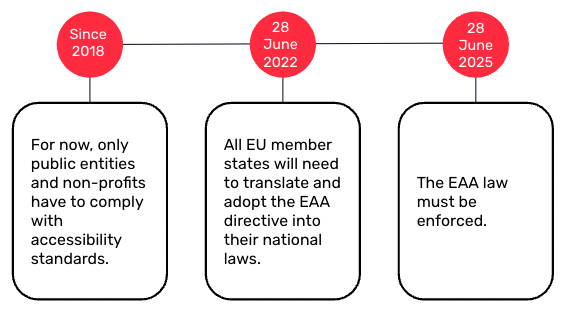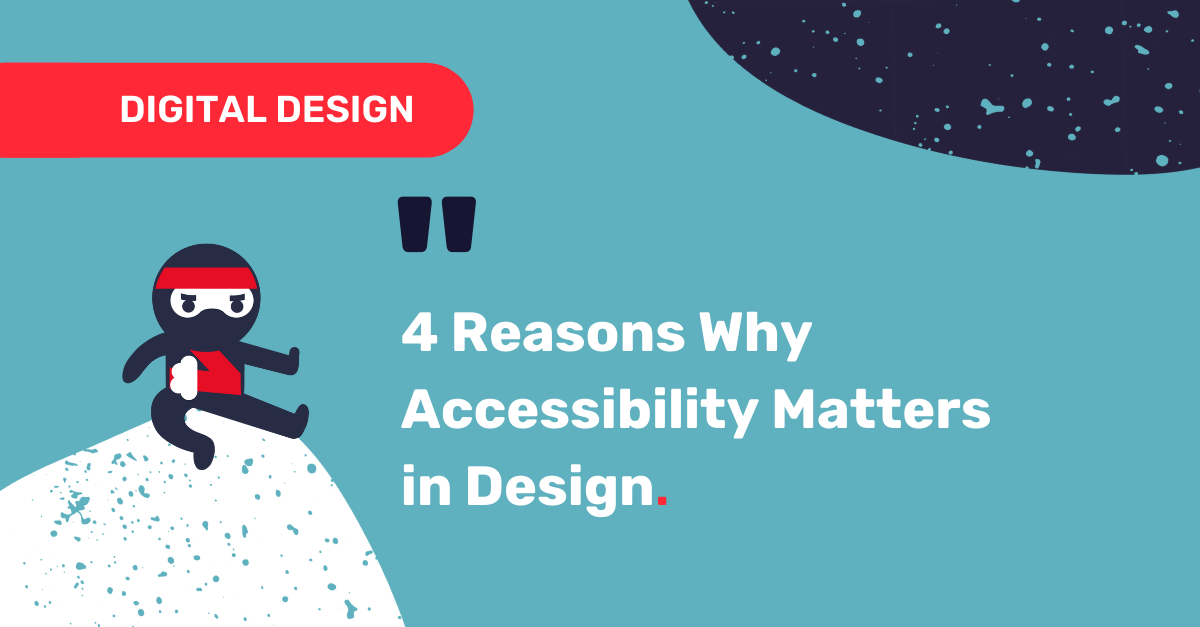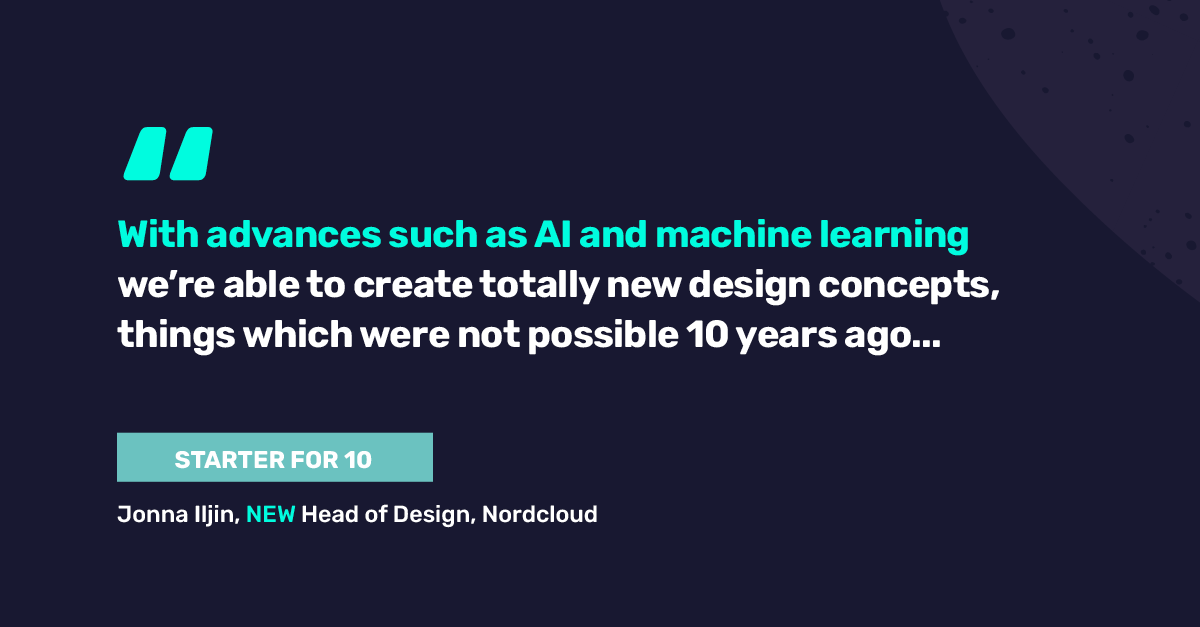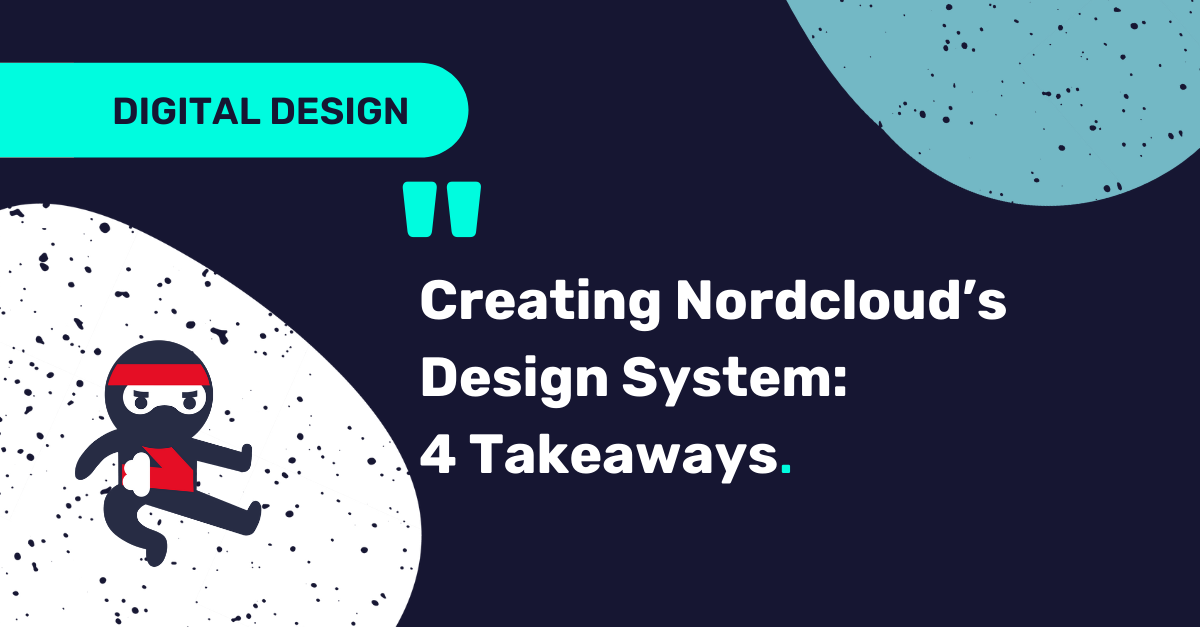
Why You Need to Care About Accessibility Now (Hint: There are New Laws)
Why is accessibility so important when planning new digital products and services or modernising existing ones?
People with disabilities form one of the largest user groups in the world. For example, on average, people spend 6 years with disabilities as they get older, and the proportion of the ageing population is increasing every year. Overall, 15% of the world's population has some sort of disability, which can involve impairments that are:
- Motor (e.g., inability to walk, quadriplegic)
- Auditory (e.g., hearing difficulties, deafness)
- Visual (e.g., colour blindness, low vision, blindness)
- Cognitive (e.g., dyslexia, anxiety)
- Speech (e.g., mutism)
- Neurological (e.g. epilepsy, Parkinson's disease)
Therefore, websites with inaccessible services are failing to accommodate a growing number of people.
Accessibility is good business
Accessibility is more than laws and regulations – it contributes to a company’s reputation and affects their brand, values and service quality.
Therefore, investing in accessibility means showing a company places importance on providing products and services all their potential customers can use. And that, in turn, opens opportunities for a larger customer base and more revenue.
This means accessibility impacts the business in many ways, and should always be part of product development and modernisation processes.
Rules and regulations enforce accessibility
90% of websites are inaccessible to people who rely on assistive technology like screen readers. So it comes as no surprise that accessibility lawsuits have risen sharply in recent years, with rules and regulations implemented globally to improve the participation rate of people with disabilities.
Accessibility is standardised and defined by the Web Content Accessibility Guidelines (WCAG). These standards have different compliance levels marked by A, AA or AAA. Government institutions, for example, require at least AA compliance. For now, only public entities and non-profits have to comply with the WCAG 2.1 standard.
Accessibility guidelines are regulated by the European Accessibility Act (EAA) in Europe and the Americans with Disabilities Act (ADA) in America. Unlike the WCAG, these are legally binding.
Let’s take a closer look at the European Accessibility Act
On 28 June 2022, the EAA will enter into force to regulate accessibility standards for all EU countries. There’s a 3-year transition period until 28 June 2025, by which time it will also apply to private businesses.
The EEA aims to improve the internal market for accessible products and services. The directive covers areas identified as the most important for people with disabilities, including software, digital services and hardware.

What does the EEA mean for organisations?
Websites or services from the public sector and non-profits have to meet accessibility requirements under the EEA. It’s the law, and non-compliance can lead to legal action and fines.
For private-sector organisations, the story is a bit different. They still have time to adjust and prepare during the 3-year transition period until June 2025. However, this doesn’t mean you can lie back and forget all about it. The road towards accessibility can be long, so it’s wise to start looking into all your services and digital content now. That way, you can make sure you’re ready in time.
Becoming more accessible is a process
Working with an accessibility mindset is a process that needs to be learned and adjusted to over time, as a team – it doesn’t happen overnight.
The more people in an organisation who know about accessibility, the better. In general, it should be considered from the very start of a project or business idea. If an existing product or service needs to be modified to meet EEA standards, everyone working on it must learn about accessibility.
An accessibility audit can help you get started with the most urgent fixes, and an expert team can assist or completely manage this journey towards becoming accessibility compliant.
What does accessible design mean in practice?
In short, designing for accessibility means designing for all users. It means making sure the service is equally accessible to all, regardless of the device or assistive technologies people are using.
There are 4 principles to ensure a product or service is accessible:
- Perceivable: Presented information can be perceived with the user’s senses
- Operable: Users can interact with the user interface (UI)
- Understandable: Users can understand the UI and its operations
- Robust: Access to content is granted throughout technological changes
Following these principles will not only help you achieve an accessible user experience, but it will also help you maintain accessibility over time.
How do you design for accessibility?
Designing for accessibility includes various steps and considerations, such as:
- Applying labels to UI elements like buttons, links and navigation
- Making sure navigating via keyboard works and all elements are reachable
- Providing alt-texts for illustrations, audio and video content
- Making automated screen updates predictable
- Ensuring user feedback is accessible (e.g., banners, error messages)
- Avoiding time-out interactions or making time limits adjustable
- Checking font size and colour contrast
- Avoiding pointer-specific interactions, like content appearing on hover
These are just some practical examples of how to make a product or service accessible. When modernising a digital service or creating a new product or feature, it’s much easier and more sustainable to take care of accessibility right from the start. Doing so saves money, time and makes the process less frustrating for everyone involved.
Are you ready for EEA compliance?
Get in touch to hear more about how to conduct an accessibility audit and include accessibility in your product development/modernisation processes.
Our expert team ranges from UX designers and software developers to product owners and legal advisors – and they’re standing by to help.
Book a free chat to discuss what’s involved in helping you prepare for EEA compliance and improve your accessibility approach.
Get in Touch.
Let’s discuss how we can help with your cloud journey. Our experts are standing by to talk about your migration, modernisation, development and skills challenges.





